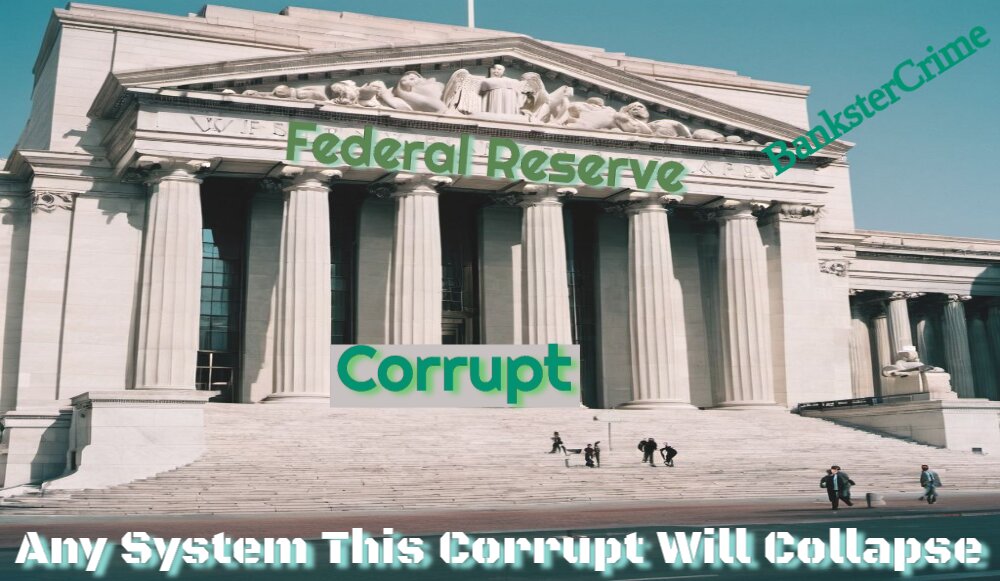Fed’s Vice Chair for Supervision Says Another Financial Crisis Could Cost U.S. $5 Trillion to $25 Trillion – Potentially as Much as 100 Percent of GDP–It’s Tribulation In Full View

BanksterCrime:
By Pam Martens and Russ Martens
On Monday, Michael Barr, the Vice Chair for Supervision at the Federal Reserve, addressed a contentious issue in a speech before the American Bankers Association’s annual convention in Nashville. The topic was why federal banking regulators have proposed higher capital levels for the largest U.S. banks, those with assets over $100 billion.
As we reported on September 20, there has been aggressive pushback on the proposal from large banks, their lobbyists and their trade associations. (Community banks are not impacted by the proposal.)
During his speech, Barr put a staggering dollar figure on the destruction to the U.S. economy that could materialize from another major financial crisis. Barr said this:
“Research suggests the costs of a financial crisis are sizable. While estimates vary widely, the cumulative loss in economic activity is consistently estimated to lie above 20 percent of annual GDP—and in some estimates up to 100 percent of GDP. For the United States, these estimates imply losses from financial crises of $5 trillion to $25 trillion based on current GDP. The macroeconomic benefit of increased capital comes from reducing the likelihood of such a costly event. Better capitalized banks are better able to absorb losses and continue to lend to households and businesses through times of stress, which in turn, helps to ensure that we have a healthy and strong economy.”
Banks could have been building up their capital over the years by simply retaining earnings. Instead, the largest banks have been using tens of billions of dollars in earnings each year to buy back the bank’s own stock. That puts an artificial prop under the bank’s share price and allows the top executives to get fat bonuses for good share price performance.
In June 2020, reporters at Bloomberg News dropped a bombshell, revealing that the four largest U.S. Banks — JPMorgan Chase, Bank of America, Citigroup and Wells Fargo — had spent more on dividends and share buybacks than the banks had actually earned from January 2017 through March of 2020. The reporters wrote this:
“From the start of 2017 through March, the four banks cumulatively returned about $1.26 to shareholders for every $1 they reported in net income, according to data compiled by Bloomberg. Citigroup returned almost twice as much money to its stockholders as it earned, according to the data, which includes dividends on preferred shares. The banks declined to comment.”
In July of 2017, Thomas Hoenig, then Vice Chair of the Federal Deposit Insurance Corporation (FDIC), sent a letter to the U.S. Senate Banking Committee. He made these points in his letter:
“[If] the 10 largest U.S. Bank Holding Companies [BHCs] were to retain a greater share of their earnings earmarked for dividends and share buybacks in 2017 they would be able to increase loans by more than $1 trillion, which is greater than 5 percent of annual U.S. GDP.
“Four of the 10 BHCs will distribute more than 100 percent of their current year’s earnings, which alone could support approximately $537 billion in new loans to Main Street.
“If share buybacks of $83 billion, representing 72 percent of total payouts for these 10 BHCs in 2017, were instead retained, they could, under current capital rules, increase small business loans by three quarters of a trillion dollars or mortgage loans by almost one and a half trillion dollars.”
In his speech on Monday, Barr did not address the issue of stock buybacks, but he did take on the whines of bank executives like JPMorgan Chase’s CEO, Jamie Dimon, who is challenging the proposal to hold larger amounts of capital by using the canard that it will force the banks to reduce making loans. Barr said this:
“The effective rise in capital requirements related to lending activities in the current proposal is a small portion of the estimated overall capital increase. The bulk of the rise in required capital anticipated in the proposed rule is attributed to trading and other activities besides lending—activities that have generated outsized losses at large banks and areas where our current rules have shortcomings. The estimated increase in capital required for lending activities on average—inclusive of both credit risk and operational risk requirements—is limited. Such a rise might be expected to increase the cost to banks for funding the average lending portfolio by up to 3 basis points—0.03 percentage points…
“The private costs of capital must be weighed against the social benefits of higher capital in creating a healthier, more resilient financial system, and reducing the likelihood of financial crises. As we indicated in the preamble to the [Basel] endgame proposal, historical experience—particularly our experience during the Global Financial Crisis—demonstrates the severe impact that distress or failure at individual banking organizations can have on the stability of the U.S. banking system. Fifteen years ago, the Global Financial Crisis starkly revealed the cost to society of a banking system that had held insufficient capital. In the lead-up to the financial crisis, the rules didn’t fully capture the credit and operational risks of asset classes like subprime mortgages, securitizations, and derivatives, which led to enormous losses at banks. Banks were woefully undercapitalized for these losses. The financial crisis upended lives and did severe damage to the economy, causing the worst and longest recession since the Great Depression. It took six years for employment to recover, during which time long-term unemployment ran for long periods at a record high, and more than 10 million people fell into poverty. Six million families lost their homes to foreclosure. And these costs occurred even with an unprecedentedly large response by government.”
Revelation: A Blueprint for the Great Tribulation


A Watchman Is Awakened


Will Putin Fulfill Biblical Prophecy and Attack Israel?



Newsletter
Orphans

Editor's Bio












